Different Variants of Thermostats Based on The Working Principle
1. Mechanical Thermostats
These thermostats use bi-metallic strips which makes them more resistant to fluctuations and power outages. It has moving parts and you can install it conveniently. One of the best things about mechanical thermostats is that it comes at an affordable value. You can easily use them for vapor-filled bellows. By applying the principle of thermal expansion, these types of thermostats help cool and heat the water. It is also easy to use and is very popular.
Best Heat pump thermostat reviews Thermostat Wire colours Best ring thermostat reviews Ecobee Vs Nest Best Z wave Thermostat Best Line Voltage Smart Thermostats Best Attic Fan Thermostats
Of late, mechanical thermostats utilize gas expansion & contraction so that they can move quickly according to the variations in temperature. This allows you to save money when the system is not running. Often the thermostat error troubleshooting is very simple. However, they do come up with some disadvantages as there are limited options when it comes to customization and control. Even the maintenance can be very expensive and the temperature changes can take a long time. Because of this slow response in temperature, they are considered to be unreliable. Pros
Super easy to operate. Less expensive installation. Easy troubleshooting of moving parts.
Cons
Limited control and customization.
2. Digital Thermostats
Digital thermostats utilize modern technology for sensing room temperature. It uses this information for tuning the cooling or heating system. With it, you can have many options for controlling temperature. One of the best things about digital thermostats is that there are programmable and you can use them according to your needs. They offer efficient ways of managing the circuits & there is even a quick response to the changes in temperature. Digital thermostats are also smaller and come with many capabilities. The only downside is that the installation can be long and more expensive. Pros
Quick response time to temperature changes. Highly efficient in energy usage. Easy programmable and customizations.
Cons
Expensive installation.
Different Variants of Thermostats Based on The Programmability
1. Non-Programmable Thermostats
These thermostats don’t come with smart technology or pre-settings. To use them, you will have to adjust or set them manually. This makes it ideal for people who prefer to stay at home. It has basic composition and enables you to change the temperature at any time you want. All you have to do is to adjust the setting with your physical interference. You will not be able to pre-program Non-Programmable thermostats. This makes it very inconvenient when you are sleeping or when you are away from home. Despite this, it delivers efficient performance by maintaining the temperature of your preference. Non-Programmable thermostats are very reliable and come with a clear interface. However, it does not come with any efficiency features. Pros
Easy to operate with simple interface Less expensive to install and maintain Different types of settings available
Cons
Not programmable and advanced features absent.
2. Programmable Thermostats
What separates Programmable thermostats from Non-Programmable thermostats is that you can adjust the temperature accordingly. This lets you have better convenience while delivering your energy usage at home. There are different models of Programmable thermostats and you can adjust the temperature during the day or night. Some of it also comes with weekly and daily settings. It serves perfectly for people who live in those areas with drastic climatic changes. Programmable thermostats allow you to program the temperature and save money on the heating and cooling system of your home. There are even models that come with smartphone compatibility. With it, you can have more opportunities for easy customization. They also come with Wi-Fi functionality. Even after saying this, it can be expensive when compared to Non-Programmable thermostats. Pros
Different customization options available. Perfect for places where temperature changes frequently.
Cons
Highly expensive in comparison to non-programmable ones.
3. Smart Thermostats
As the latest thermostat technology, smart thermostats integrate with different home automation equipment. It will automatically adjust the temperature accordingly so that there will be better heating and cooling efficiency. There are smart thermostats that have voice control capability and let you use them with Alexa and Google Assistant. Smart thermostats use advanced learning algorithms for adjusting the home temperature. It will automatically program the temperature according to the pattern. This makes it perfect for busy people. As it comes with Wi-Fi technology, you can make changes with your smartphone or tablet. You can set the thermostat at different times of the day, week, or month. It can even give you an alert when the HVAC requires maintenance. However, smart thermostats are the most expensive of all the thermostats. Despite this, it can be a perfect investment for anyone, particularly for tech-savvy people.
Different Types of Thermostats Based on Innovation
1. Wi-Fi Thermostat
By connecting to a wireless network, Wi-Fi thermostats let you access the network on your computer, smartphone, or tablet. You can remotely adjust the temperature of the thermostat as it is programmable. This type of thermostat offers the convenience of overriding a pre-programmed temperature setting. You can have complete control over the temperature setting of your home even when you are not present physically. Pros
Complete access and control from anywhere. Option to change the preset values on a program routine. Highly economical. Lower utility bills.
Cons
It is expensive.
2. Touch Screen Thermostat
Touch screen thermostats do not come with any hard buttons. With the touch-sensitive display, it lets you have a similar operation to that of a smartphone. All the settings are available on the screen so that there will be a quick operation. Pros
Button-free feature prevents accidental hitting of any button. Quick and easy programming.
Cons
It can come with a complicated interface. People with large fingers may find it difficult to use touchscreen models.
3. Learning Thermostat
Learning thermostats can easily connect to wireless networks. As the latest thermostat technology, it lets you manage or monitor remotely from your smartphone. This makes it perfect for people who have busy schedules. It also comes in a programmable design and needs manual programming initially.
4. Communicating Thermostat
Communicating thermostat enables setting and monitoring programs by direct communication. The advanced features make it more than a thermostat device. You can easily ask for adjusting features, furnace settings, and even troubleshooting assistance.
Several Other Types of Thermostats –
1. Bulb Thermostat
Bulb thermostat comes with a single or double-stage temperature controller for heating or cooling. It utilizes a liquid-filled sensing element along with a capillary. A bulb thermostat has a concealed set point which switches the line voltages. However, they are less common for home use. It operates on a 120/240 VAC.
2. Fan Coil Thermostat
Fan coil or proportional thermostats are perfect for building automation systems. You can even use it in residential buildings. It works with 120V and 240v AC systems and is suitable for both manual and automatic modes. It can control multiple fans along with fan and system switching models. It also comes with remote sensor capability
3. Heat-Pump Thermostat
Heat pump thermostats are suitable for controlling the heat pump. It lets you use it for both heating and cooling applications. You can find the one that can come with diverse functions so that there will be removed sensor capabilities. Some of the features include 3 status LEDs, system switching, and supply voltage of 20 to 25 VAC. The heat pump thermostat also lets you select from Fahrenheit and Celsius. They utilize a multistage seven-day non-Programmable/Programmable proportional-integral thermostat.
4. Line-Voltage Thermostat
In a line voltage thermostat, the connection flows through the thermostat and then into the heater. This makes it perfect for single heating systems like baseboards and radiator systems. However, they tend to shut off the entire room before you set the temperature. Line voltage thermostats let you install in series with heaters. They even tend to draw large amounts of voltage and current.
5. Low-Voltage Thermostat
As the name indicates, low voltage thermostats offer better efficiency while controlling airflow. Low voltage thermostats are suitable for central HVAC systems that require gas, oil, and electricity. They let you have complete control with better accuracy. The best thing about a low voltage thermostat is that it is programmable.
6. Low/High Limit Thermostat
A Low/high limit thermostat has a vapor-charged sensing element. They are suitable for the shutdown of ventilation systems as well as building automation systems. However, they are not suitable for home systems. Low/high limit thermostat transfer set point by closing the auxiliary contact instantly.
Conclusion
We have discussed the different types of thermostats and their functionality. While buying thermostats, you can determine your usage and see their features. When it comes to budget, non-programmable and mechanical thermostats are best. However, they offer you fewer options. When you use smart or Programmable thermostats, you can have better comfort and convenience. Again, they can be expensive and even the installation can be tough. Comment * Name * Email * Website
Δ



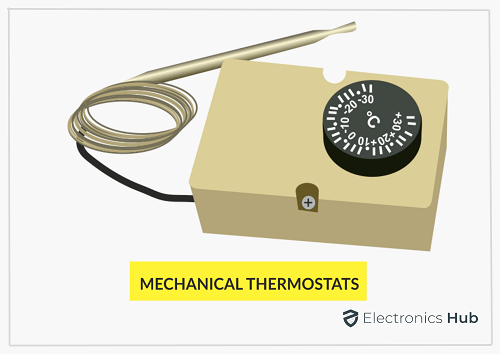
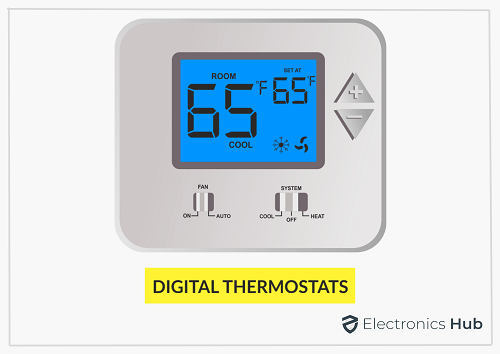
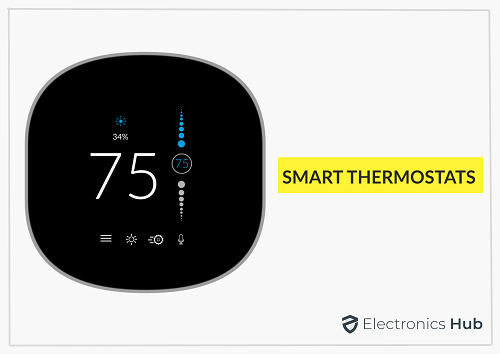
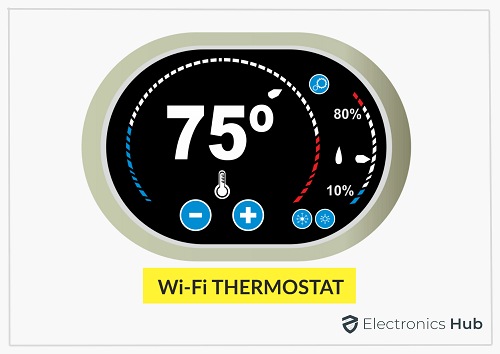
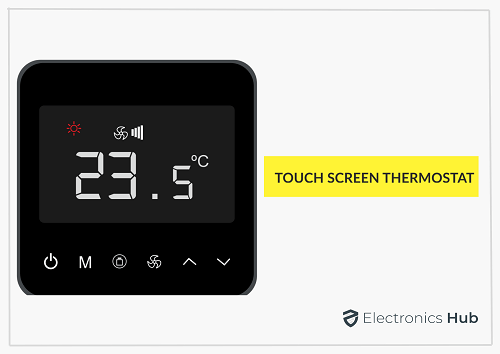
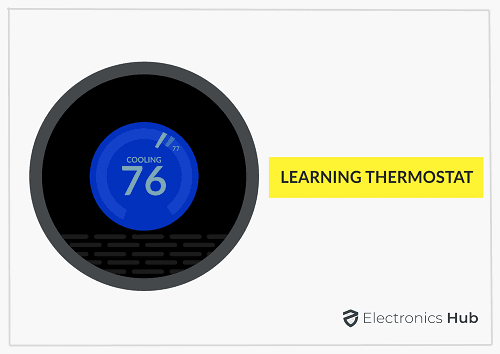
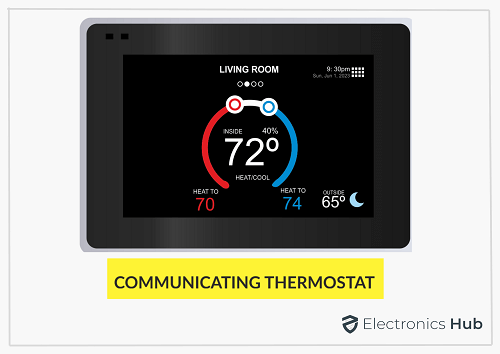
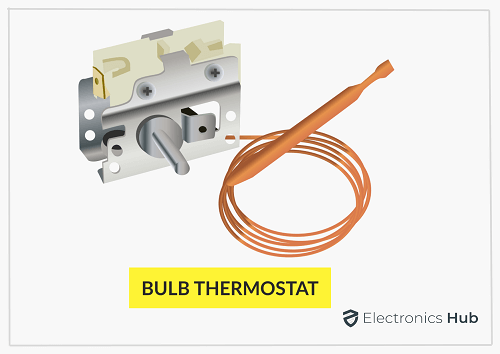
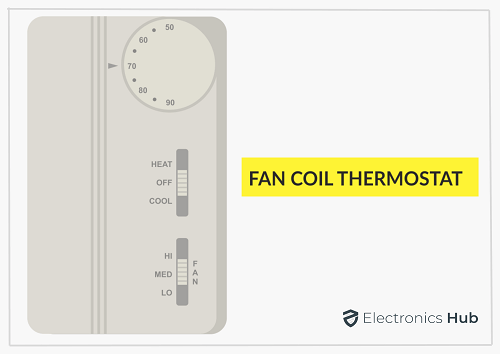
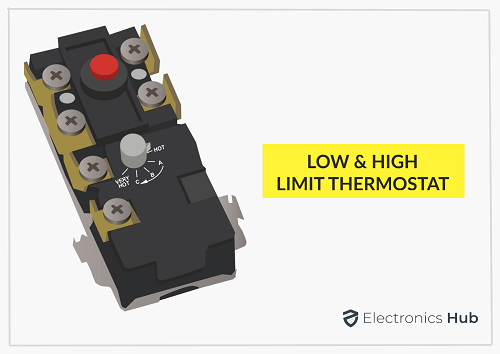


![]()